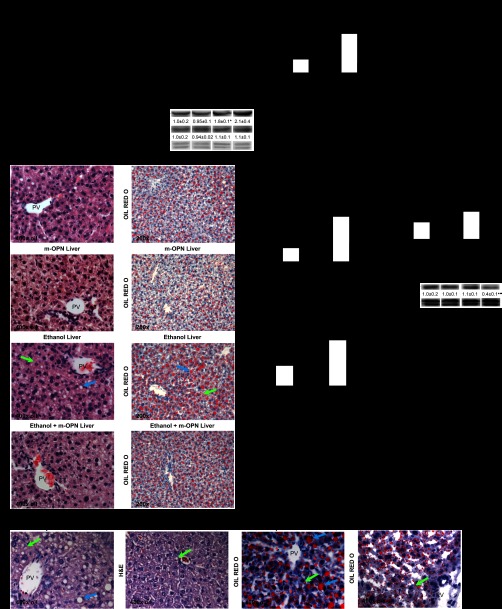Fig. 4.
Dietary supplementation with m-OPN protects from alcohol-induced liver injury and steatosis. WT mice were fed 3 wk either the control or the alcohol Lieber-DeCarli diet alone or in combination with 200 μg/ml m-OPN. A: liver-to-body weight ratio. B: serum alcohol concentration and liver cytochrome P-450 2E1 (CYP2E1) and alcohol dehydrogenase (ADH1) protein expression. C: serum alanine aminotransferase (ALT) and aspartate aminotransferase (AST) activities. D: H&E and oil red O staining showed more micro (green arrows)- and macrovesicular (blue arrows) steatosis in livers from alcohol-treated than in m-OPN-cotreated mice. E: the scores for inflammation and ductular reaction along with Western blot analysis for cytokeratin-19 are shown. F: the steatosis grade and neutral fat quantified by oil red O morphometric assessment. G: serum and liver triglyceride (TG) decreased in both groups of mice treated with m-OPN. n = 6; *P < 0.05, **P < 0.01, and ***P < 0.001 for any alcohol-treated group vs. its own control. ●P < 0.05, ●●P < 0.01, and ●●●P < 0.001 for any m-OPN treated vs. its own control. H: dietary supplementation with m-OPN lowers alcohol-induced liver injury in OPN knockout (Opn−/−) mice. Opn−/− mice fed the ethanol Lieber-DeCarli diet in combination with m-OPN showed less liver injury and steatosis than Opn−/− mice fed ethanol alone as shown by H&E (left) and oil red O staining (right); n = 6.

